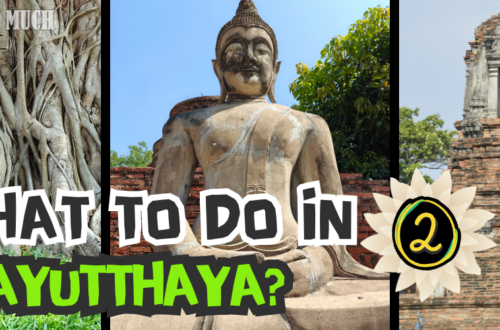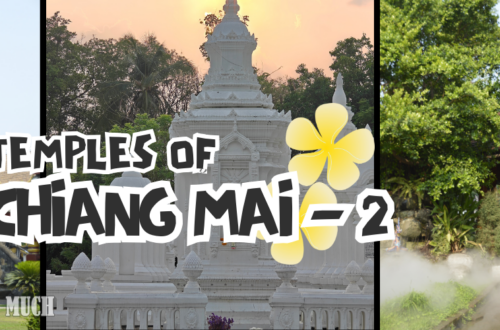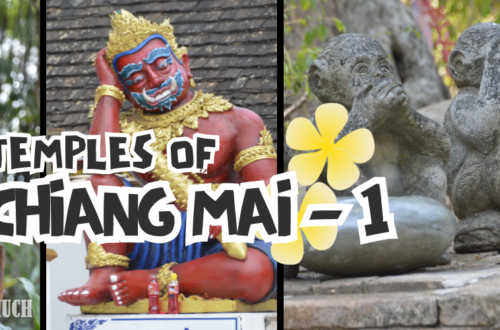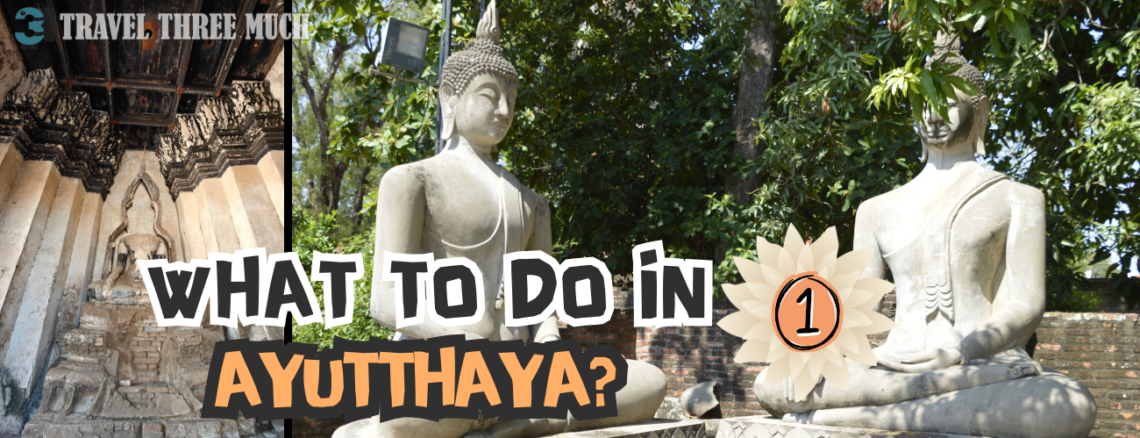
Ayutthaya – Whispers of Yesteryears – Part 1
Ayutthaya, a radiant kingdom in Southeast Asia, thrived for over 400 years. Ayutthaya’s rulers fostered art, engineering marvels, and a strong military. The last king, a solitary figure, witnessed his legacy turn to ash. Ayutthaya’s fall echoed a harsh truth: empires crumble, leaving only a smoky lesson for all to see. Join us on a captivating journey through Ayutthaya, where we’ll delve into its glorious past and contemplate the impermanence of even the mightiest empires.
Ever since we planned a trip to Thailand, Ayutthaya remained a constant in our itinerary, amidst other changes to plans.
So, we pored over Google Maps and other references to figure out a path that would take us through the Ayutthaya Historical Park and the other attractions in the city.
Ayutthaya, a UNESCO world heritage site is 80 km away from Bangkok and can be combined with the Bang Pa-In Palace. It is preferable to plan this trip on weekdays rather than the weekends, to beat the crowds. Since most of the spots are places of worship, dress appropriately abiding by Buddhist temple attire rules.
However, despite all the meticulous planning, thanks to similar sounding names, we found ourselves in the temple we had planned to visit last, as our first venue of the day! Although this created a minor detour in our plans, we had enough free time left in the plans to account for such snafus.
Top Temples to Visit in Ayutthaya
Wat Yai Chai Mongkhon
Thus we reached Wat Yai Chai Mongkhon at 10 AM. The temple is open on all days from 8 AM to 5 PM and has ample space for car parking. Entry fee for non-Thai people is 50 THB per person payable in cash at the entrance gate, and free entry for Thai citizens and kids.
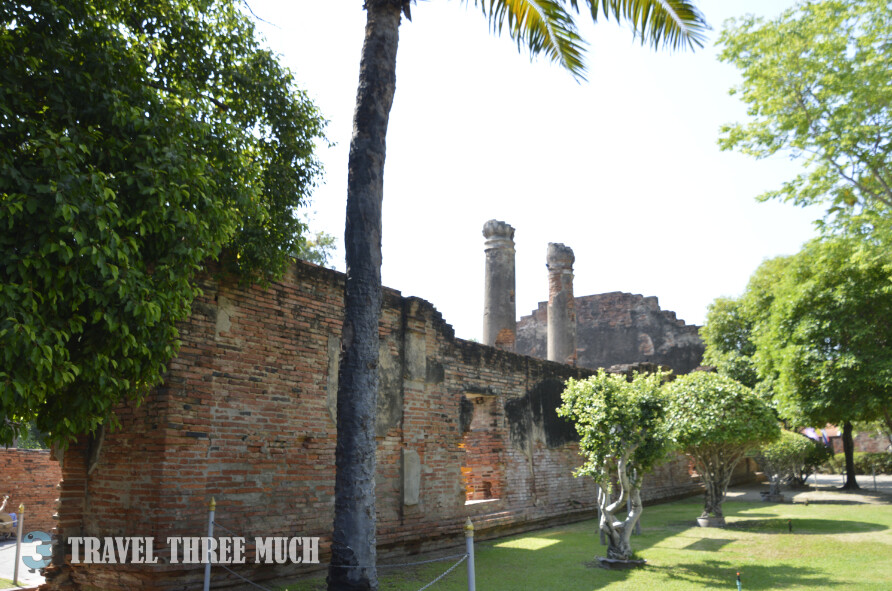
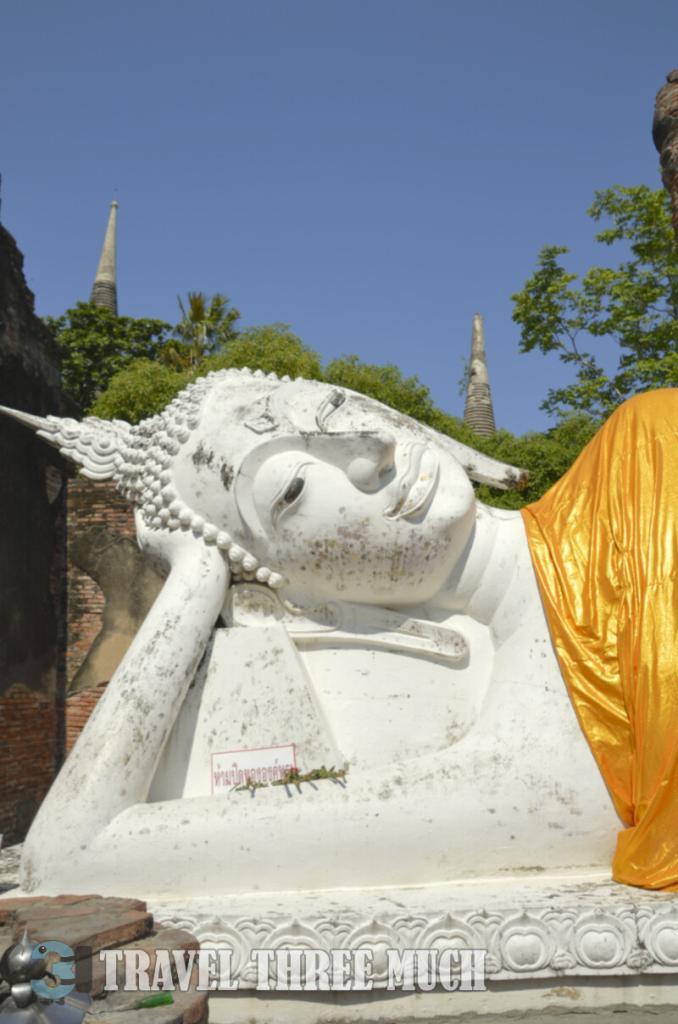
The first structure is a vihara (Viharn in Thai), a hall serving as a place for meditation and prayer. The vihara is open to the sky with a giant reclining Buddha made of bricks covered in white plaster.
The Buddha’s serene expression against the blue sky, the rich brown hues of the bricks, the golden shawl draped on the Buddha, and the baby pink lotus flower offerings by the faithful, made for a peaceful setting. Just past this vihara is the Ubosot or the ordination hall, used for important religious ceremonies.
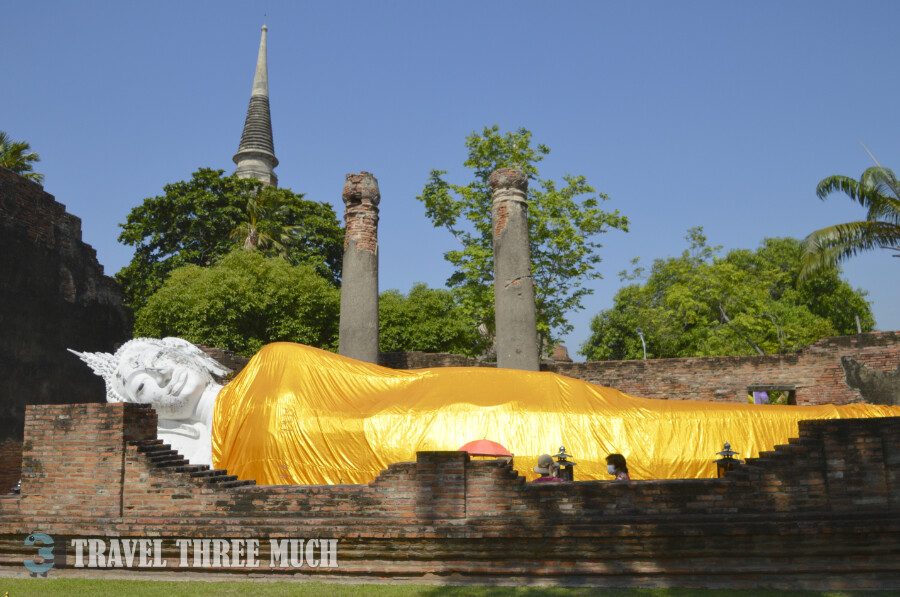
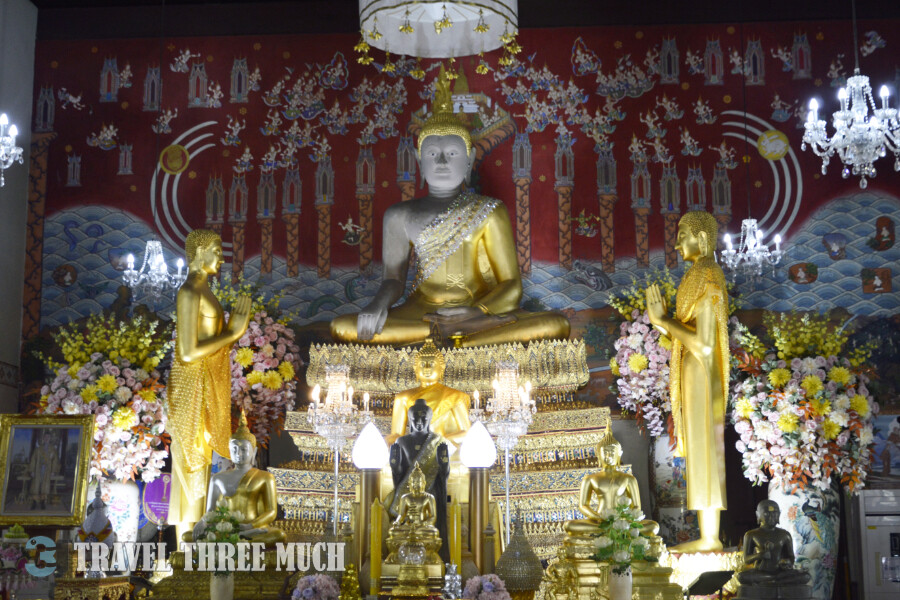
The principal ‘chedi’ or tower of the shrine is immediately opposite the entrance of the Ubosot hall. Two giant Buddhas on tall pedestals surrounded by protective brick enclosures sit on either side of the steps that lead up to the chedi.
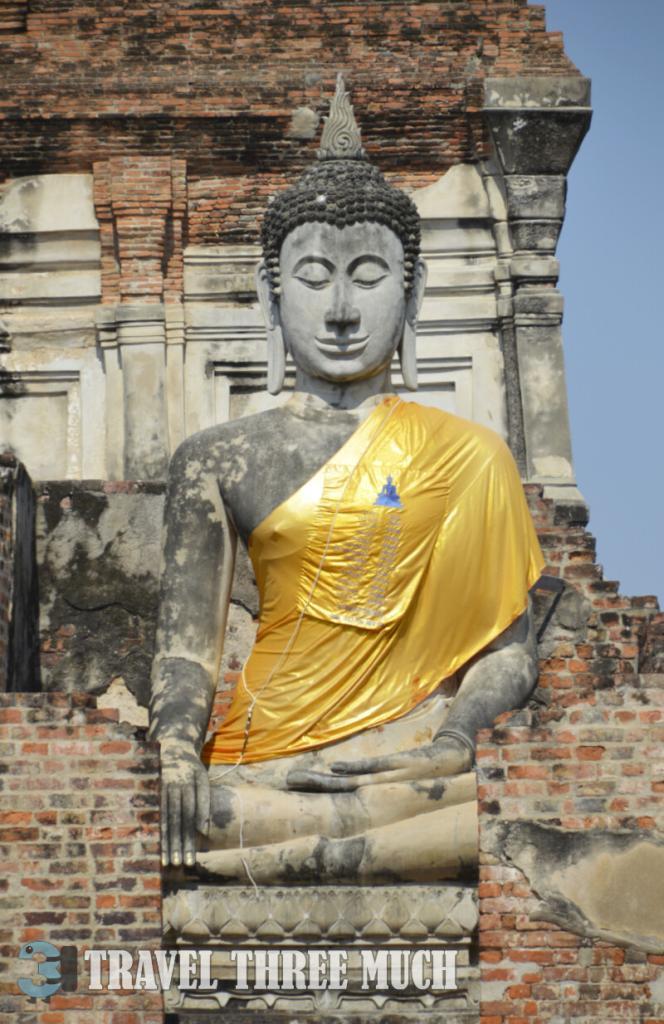
The first level of the chedi has smaller chedis at the four corners. The views of Ayutthaya are spectacular from this level and help us understand the scale of the temple. From here, one can see the remains of the viharn with a plaster statue of a seated Buddha delivering a sermon to his five principal disciples. The courtyard around the main chedi has a row of Buddha statues, mostly in the Maravijaya pose, except for a few, which are seated in the lotus posture. As we go up the stairs to the next level of the main chedi, we come to the reliquary chamber. There was a shaft at the centre of the chamber descending into the depths of the chedi, where the relics were housed. There were eight statues of the Buddha in the lotus posture, in alcoves within this level.
There are a few historical events associated with this temple – the origins of this temple lie in the interment of the mortal remains of two princes of the Ayutthaya kingdom, under the orders of King 68Ramathibodi I, in 1357 CE. King Naersuan defeated the Burmese crown prince and slew him during an elephant-back single combat in 1592 CE.
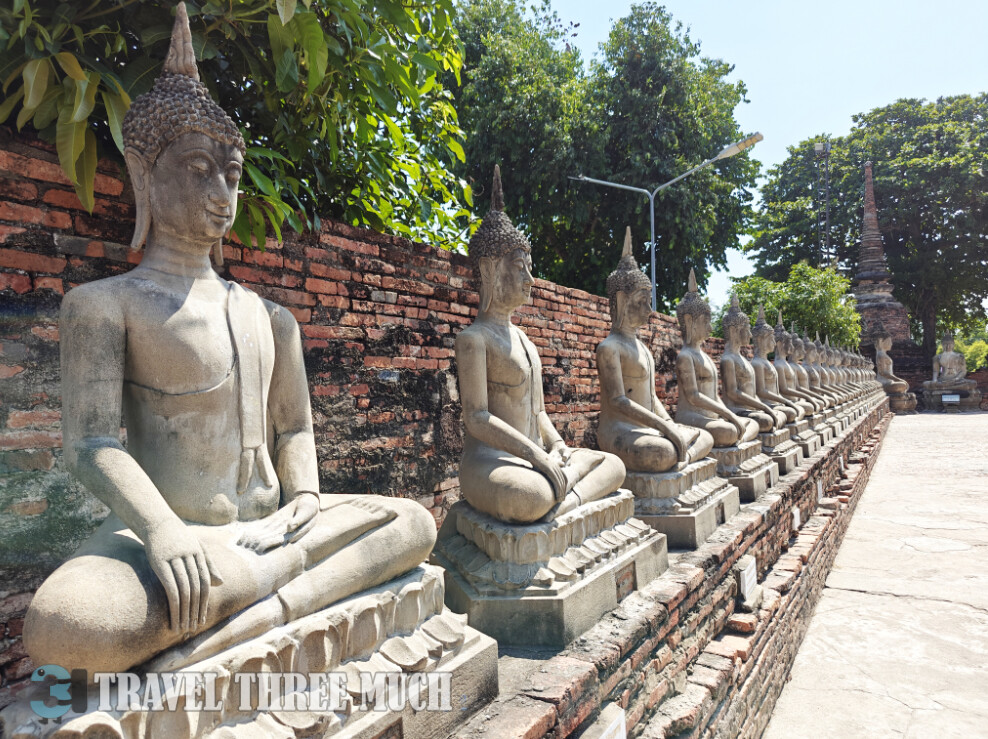
To commemorate this victory, the king ordered temple restorations here and an expansion and possibly bestowed it its present name, which in Thai means “The Great Temple of Auspicious Victory“. We then went to a viharn with a roof and an altar with Buddha figures. The walls decorated with simple murals capture the dynamic poses of the forces of good and evil as the Buddha calls upon Mother Earth to witness his enlightenment and victory over the demon Mara’s temptations.
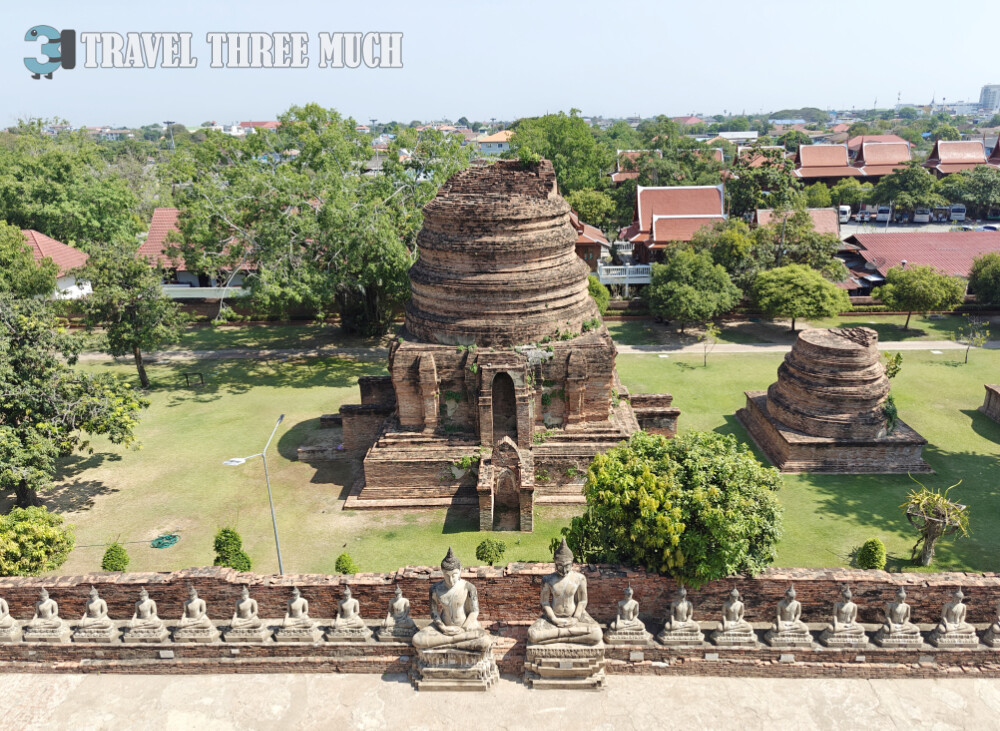
Wat Chai Waathanaram
We then made our way to the next spot for the day – Wat Chai Waathanaram. We had mentioned that we had wanted to go to Wat Chai first to our cab driver and he took us to Wat Yai Chai Mongkhon instead of Wat Chai Watthnaram! 😀 For the remainder of the trip, we sent him the Google locations of the next stops in the itinerary and it worked like a charm! 🙂
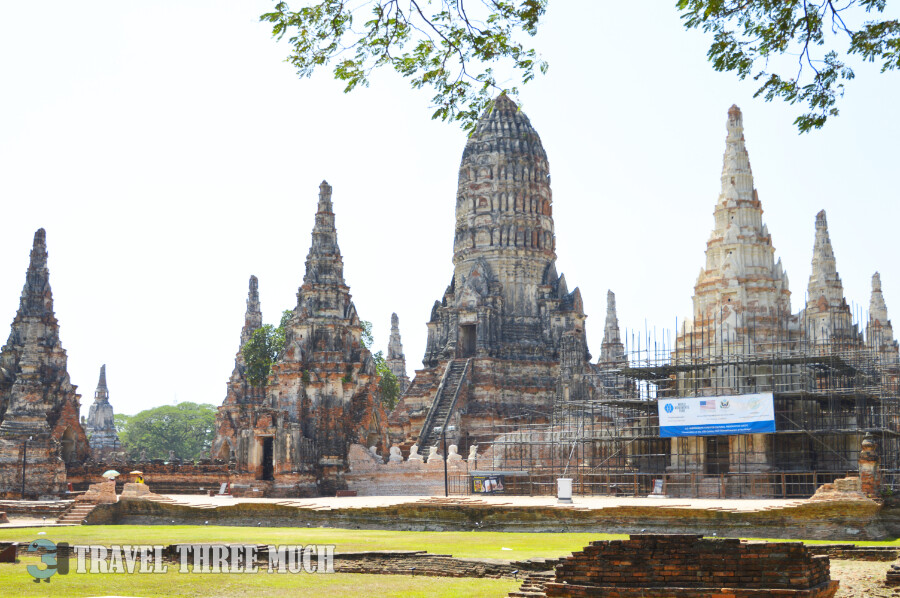
Wat Chai Watthanaram is a temple built on the bank of the Chao Phraya River in 1630 CE. The main prang (temple tower) stretching towards the sky is visible long before you reach the parking lot. The entry fee is 50 THB per person, with free entry for kids. We visited in the summer, and we saw there was a stall with umbrellas that could be borrowed for a stroll around the temple complex.
A short walk from the entry gate, past a bell-shaped stupa, we reached the outer wall of the square plan which had 8 chedis (towers used as reliquaries) in total (4 at the corners, and 4 at the central points).
The outer walls of the chedis used to be decorated with stucco work of episodes from the Buddha’s life, a few fragments of which are intact today.
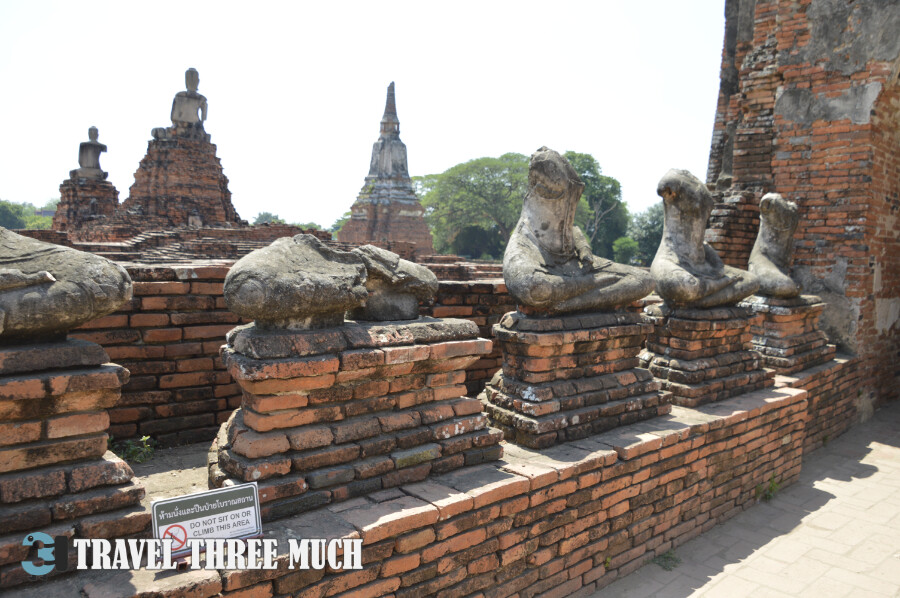
We moved to the inner passage through a break in the wall.
The arrangement was similar to the Wat Yai Chai with rows of Buddha statues, seated in perfect symmetry on brick plinths.
Only a few statues retain their heads after the devastating sack of the city, and the remnants of the pillars that would have supported the roof above the statues, showing in a few places give us a glimpse of how magnificent the complex would’ve looked when intact.
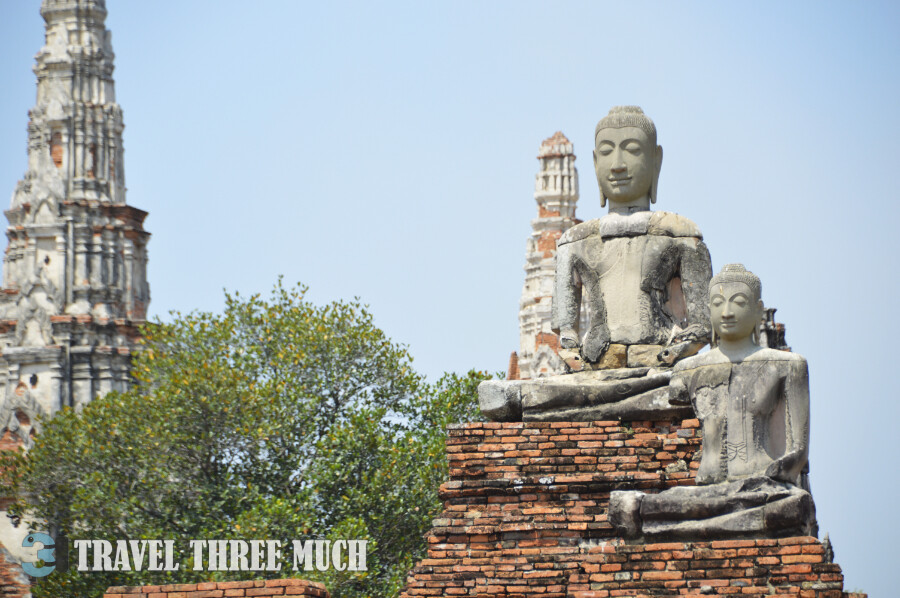
Each of the eight chedis of the outer wall had a giant seated Buddha and the inner walls were decorated with murals, once again of which only portions remain. The temple was undergoing restoration when we visited it.
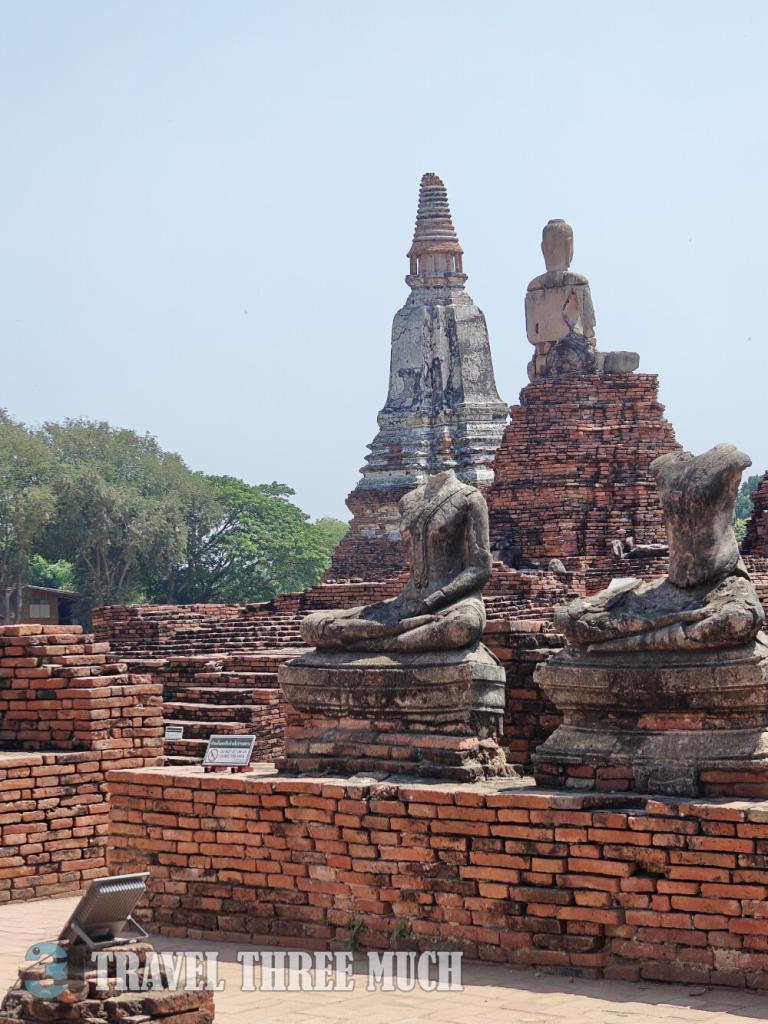
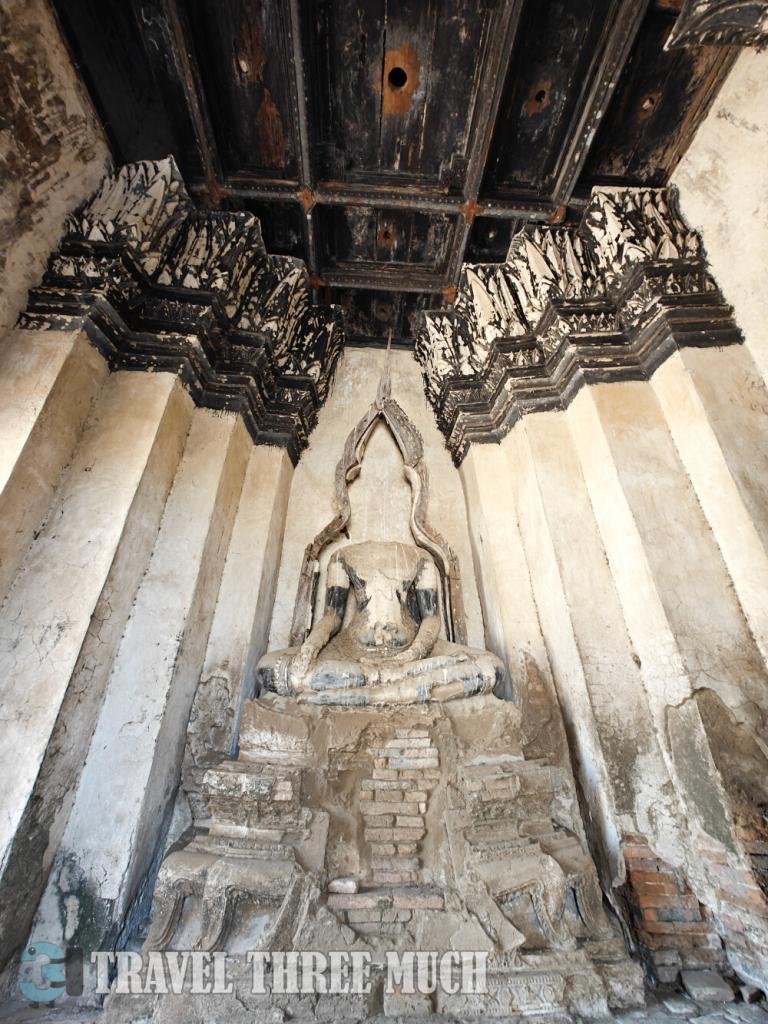
So we could only peek into some of the outer chedis and not enter them due to barricades and scaffolding. From the bits and pieces of the platforms, the headless statues, and the framing structure with stylized flames and fragments of stucco embellishments, we could imagine what majesty these alcoves would’ve exuded.
The platform on which the main prang sits has two levels. A short flight of stairs leads to the first level. This level has four small prangs at the corners.
A longer flight of steep stairs on each of the four sides of the main prang leads to a chamber. It is forbidden to climb any of these levels. The entire complex, including the prang and the chedis, is built in the Khmer style.
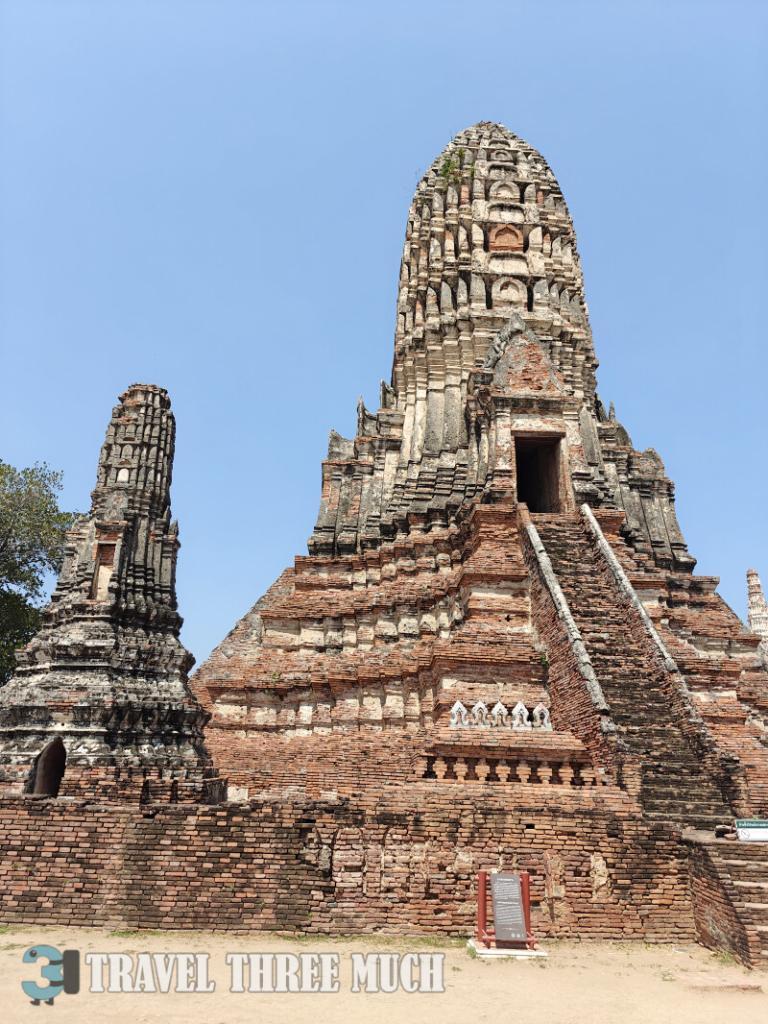
On the way back out we saw the ordination (Ubosot) hall’s ruins of which only the plinth and the bases of the pillars remain. There was also the remainder of an altar with two Buddha statues seated at different heights with distinctly different styles of facial features and hairdos. On either side of the Ubosot hall are two chedis, which hold the ashes of King Prasad Thong’s mother. The king commissioned this temple as a memorial to his mother’s residence.
The riverside is a picturesque backdrop and sunsets must be stunning vistas. There were many people in traditional Thai costumes with props, having photo shoots done with the temple as a backdrop.
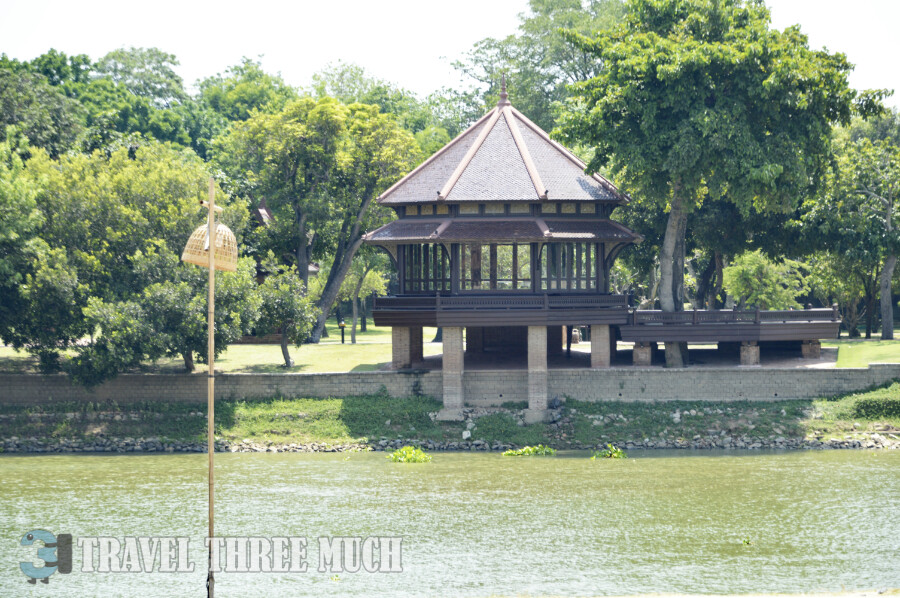
The temple remains open from 8 AM to 6:30 PM on all days, except national holidays. We headed to Mayura’s House, halfway between the entry and exit of the parking lot, to grab an iced tea and a peach soda, and to take a break from the sun beating down on us. We found the seating space a bit less, but the food and drinks were excellent and reasonably priced. Refreshed, we headed out to our next stop, Wat Lokkayasutha.
Wat Lokkayasutha
Wat Lokkayasutha is largely ruined, with only the foundations and a singular prang (tower) remaining of the original temple. It is set a little ways off of the main Ayutthaya complex of monuments. So you may want to get a tuk-tuk or if it’s not too warm, get a bicycle to visit this place. There’s very little tree cover at the monument so, if you’re on foot, an umbrella or cap would be a good idea to shield from the sun. There’s no entry fee and the open timings are from 8:00 AM to 4:30 PM every day.
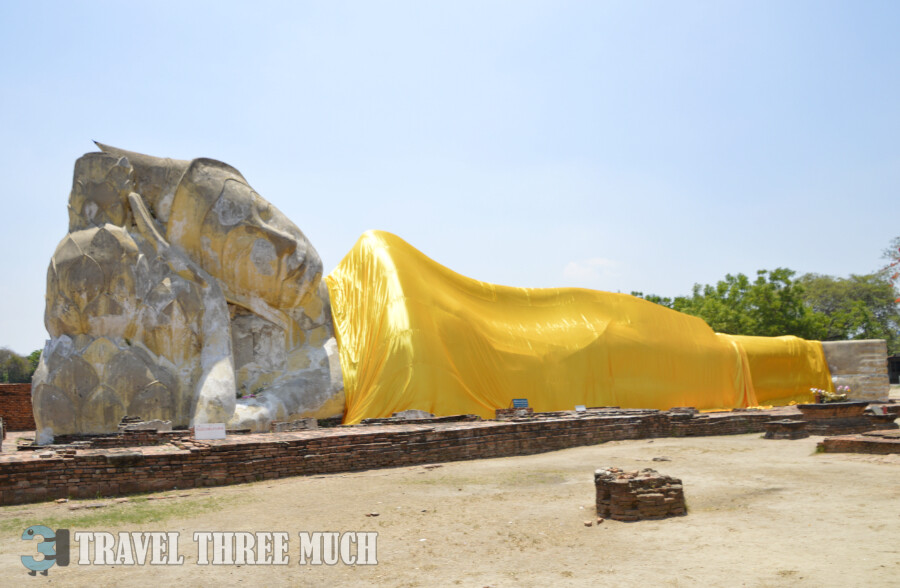
The highlight of this place is the massive reclining Buddha who’s resting his head on a palm, which is, in turn, resting on lotus blossoms, with a hint of a smile playing on his lips and closed eyes. There weren’t many people at the monument when we visited.
Wat Worachettharam
Our sharp-eyed daughter spotted another ruin a little ways off but surrounded by what seemed like a moat.
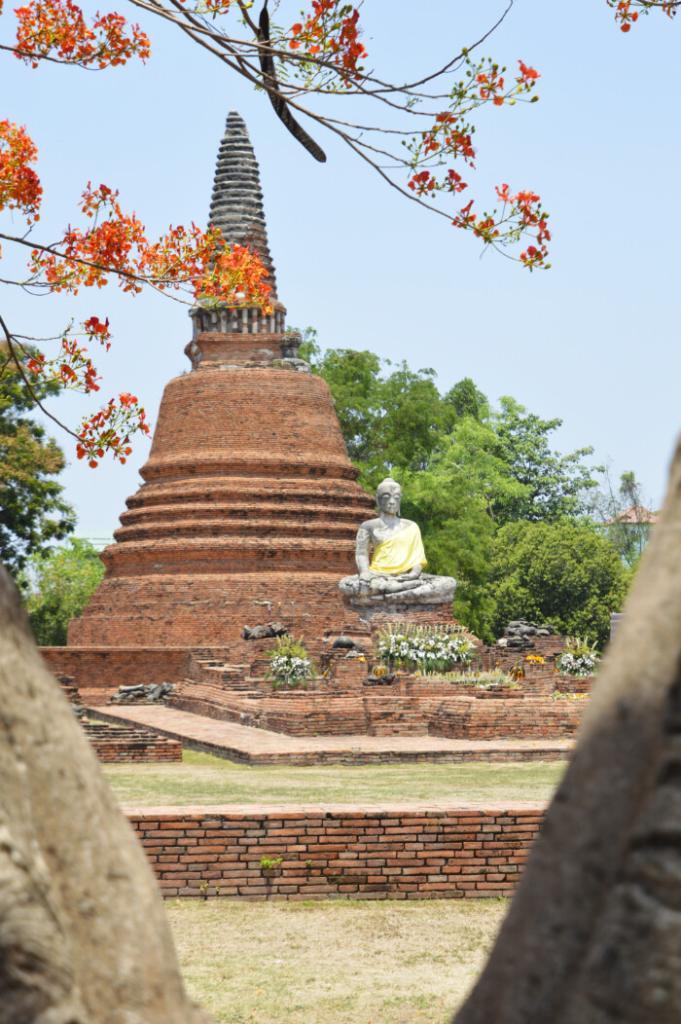
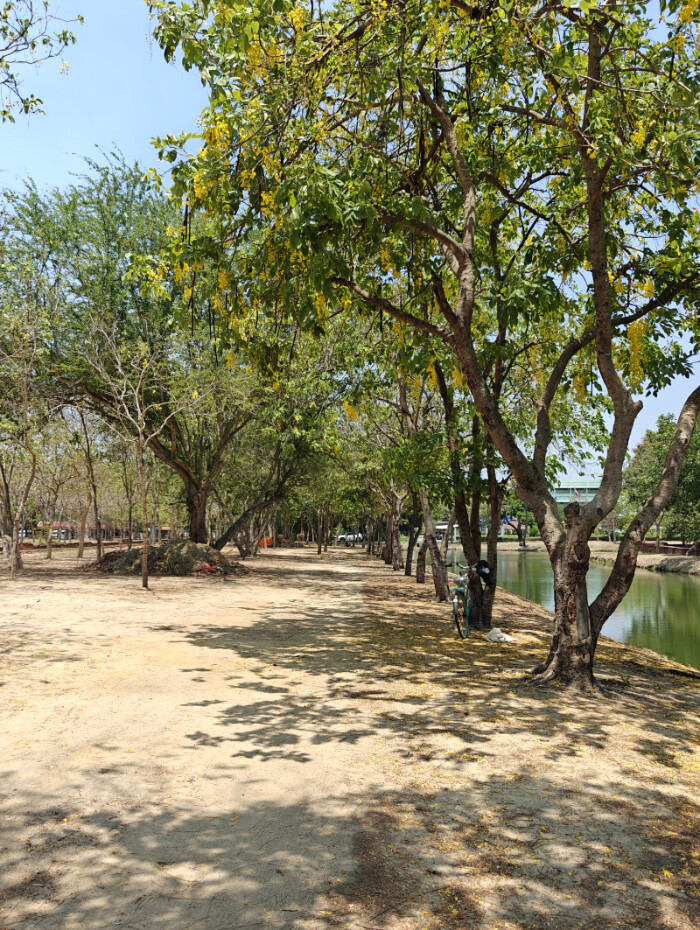
Thus we found ourselves at Wat Worachettharam, although we had never planned on visiting it.
Wat Worachettharam was commissioned by King Ekathotsarot as the cremation site of his illustrious elder brother King Naresuan, who died due to an illness when on an expedition to counter a threat of Burmese invasion.
The name of the temple in Thai translates to the Temple of the Sublime Elder Brother. We saw a bell-shaped stupa with a Buddha statue in the seated position, in front of which flower offerings had been made.
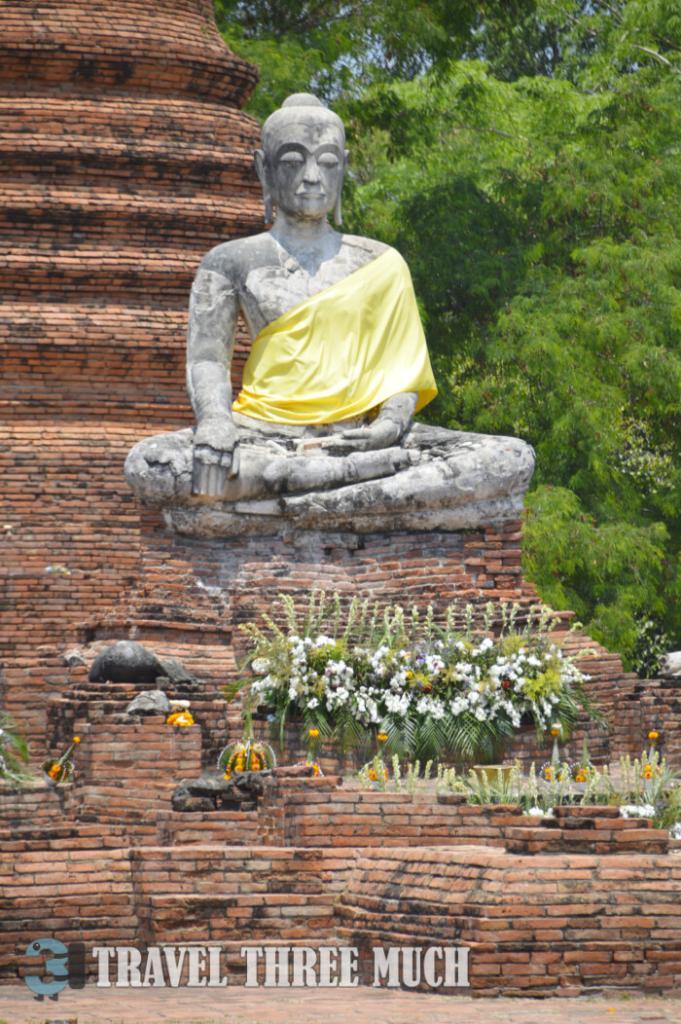
The setting of the water body, the flame of the forest tree adding a dash of colour and the silence made us spend far more time and take many more photographs than we had originally planned! There’s an Ubosot hall with another Buddha statue, which we did not see as we still had lots more to visit on the itinerary.
This is the first part of the blog, detailing our visit to Ayutthaya. Read the second part of our visit to Ayutthaya here.


